TurningArtist Adrian Negenborn has music playing at all times in his studio. He says it gives him energy and allows him to get out of his head and become truly aware of himself. His process starts out in a very structured and deliberate way, mixing his paints and making all color and compositional choices ahead of time. Then the act of painting is usually highly impulsive and reactive. Highly physical body movements influence the swiping, splattering, scrapping, and pooling of the paint. Working with multiple surfaces simultaneously and going back and forth between them, Adrian stays loose and keeps his movements spontaneous, letting his actions dictate the final result. He never revises or paints in multiple sessions because, for him, going back into a failed painting always makes things worse.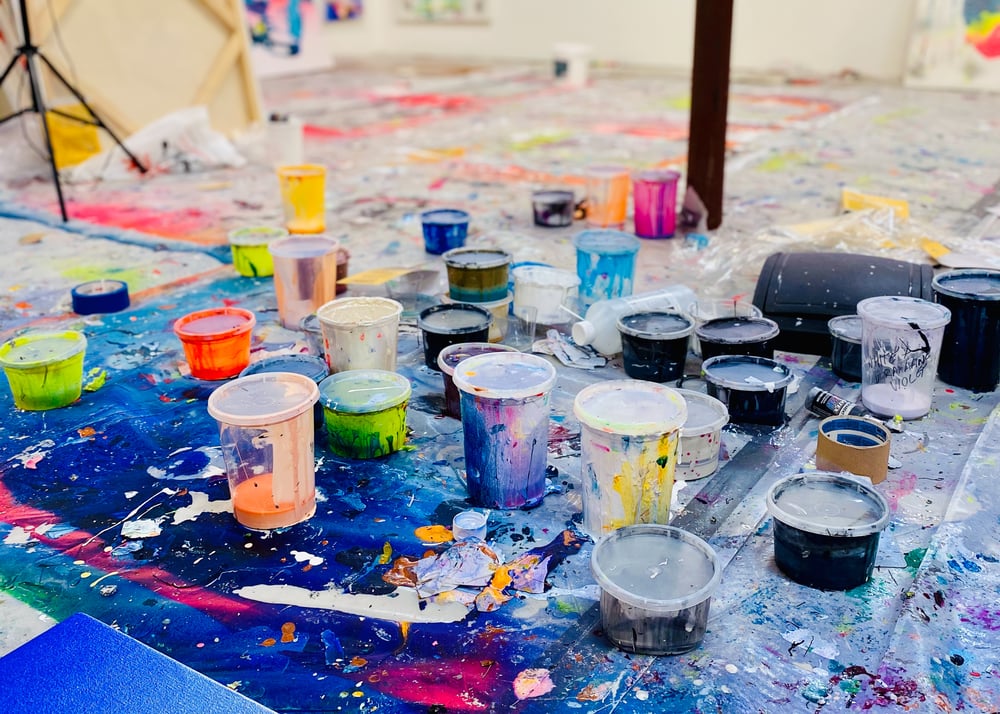 Can you tell us about your journey to becoming a professional artist?
Can you tell us about your journey to becoming a professional artist?
I have been an artist all my life. Even as a child, I drew a lot. I made the decision to become a professional artist at the end of high school. It was the only thing I could see myself doing my whole life. I went to Skidmore College where I honed my skills as a painter, I worked as a ceramic sculptor and printmaker. I learned how to be skilled as an artist. I made commissioned portrait drawings and paintings of neighbors and friends during my summer breaks. At MassArt, I learned to question what it means to make paintings in our contemporary world. Painting has always seemed to be the biggest challenge. It is so weighted with history and convention. It is the oldest documented human art form. The impossibility to do anything truly original is both daunting and inspiring. What did a finished painting look like? How much time does it take to make something good? Can you make a finished painting with only a couple of moves? What is resolution, truly?
At MassArt, I started out making paintings heavily influenced by Abstract Expressionism. I struggled to make decisions about when a painting would be finished. What parameters and criteria comprised a finished painting? I would work my paintings heavily, trying hard to dig something out of the paint. Let the painting tell me when it was done, or show me how far I could take a painting and have it fail. I would often paint a new painting on each canvas each day for weeks. Often my canvases had 15-20 paintings on them, each subsequent painting lost to the painting that came after. I noticed over time that with each painting, I lost the freshness and energy of the early stages. The first paintings on each canvas had a much greater velocity and ease of being. While appealing in their physicality, I had overworked my paintings to the point of no return. My current body of work directly resists being overworked and even pushes the boundaries of how little I can get away with.
Can you tell us about your work?
The paintings are about the process and materials. Each painting is a one-off, a new start each time. I either get it or I don’t. No reworking if things fail. I make a lot of paintings and over half of them fail to a certain degree. Each painting feels like a rehearsal for the next painting. The paintings balance orchestrated decision making and chance. I often set up a color palette, mixing colors with certain viscosities, and transparencies. I try to anticipate the painting action, with a vague slow-moving background (often sprayed or airbrushed), a stage for the action to take place. Then when the action takes place—“ all hell breaks loose”—paint is thrown, splattered, poured, scraped, brushed, flung. The plan for what might have taken place is disregarded and whatever happens, is allowed to happen. Paint interacts in ways unanticipated. Paint pools, swirls, and flows in ways not originally intended after I am done touching the surface. The paintings are allowed to be whatever they will be in their moment.
Colors are vibrant, energetic, and arbitrary. My color choices are specific to that particular moment. I move back and forth between two main color sensibilities. One of high keyed intense acid colors, and the other of monochromatic more sober neutrals.
The most successful paintings capture the primacy of the moment they were made in, while also having an order or orchestration. The marks suggest both the temporal moment in which they were made and also an object in space. They encapsulate polarized dualities of chaos and order, as well as mediated decision making and spontaneous chance.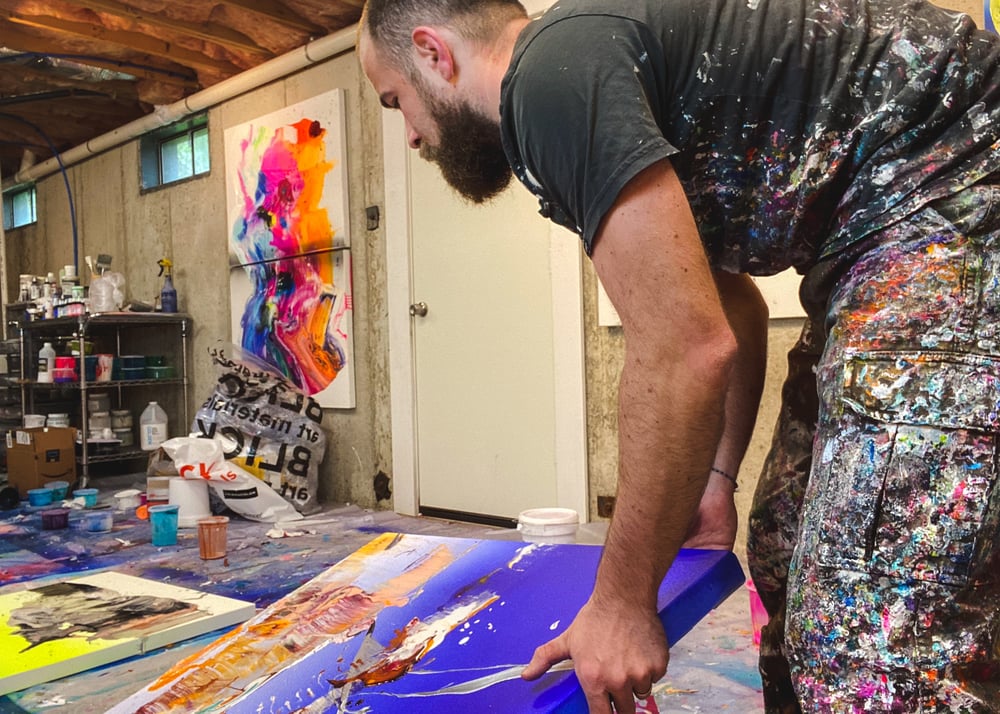 When you are looking for inspiration, what resources do you turn to?
When you are looking for inspiration, what resources do you turn to?
I often look at other artists, either historical or current. I try to go to as many shows throughout the year as I can either in Boston or in New York to see work in person. But, balancing a fulltime job with my art practice makes seeing work in person difficult. I have a growing collection of artist books that I use to reference other artists’ work. I watch a lot of art films online as well as interviews and process videos on youtube. I love Youtube and Instagram.
Walk us through a typical day in your studio. What is your routine? Has it changed with COVID-19?
I do have a day job- I am an Aquatics Director at a sports club outside of Boston. I manage and train lifeguards and swim instructors as well as teaching swimming lessons. It is a great duality in my life, something totally different than doing art alone in a studio. I work with people and their children, and I get to swim. My job provides me with a different kind of inspiration and energy in my life different than art-making. Working with young swimmers is perhaps my second passion. I often find that while my job can be physically demanding at times, it does not tax the same energies required to make art. Having two lives, provides me with a unique emotional balance.
My typical studio practice, in normal pre-COVID-19 life, is characterized by a lot of looking during the week. Most of the “ work” is looking at previous works, evaluating them, and planning for the next set of work. My studio is in my basement, so I am afforded the convenience of being able to check in on a daily basis. I often would sit and look during weeknight evenings, while weekends were devoted to periods of intense painting.
The past few weeks have been a unique period in my life, not only due to COVID-19, but because I recently became a father in March. In the weeks leading up to the birth of my son, during quarantine, I worked intensely knowing that I would have to take a hiatus for a few months. It was actually a privilege to be able to work as a professional artist for a couple of weeks without having to go to my day job. Now that my life has been turned upside down, by the birth of my son, the work has been halted, and I am looking forward to starting work again soon once we get a better grasp on a routine with my son. 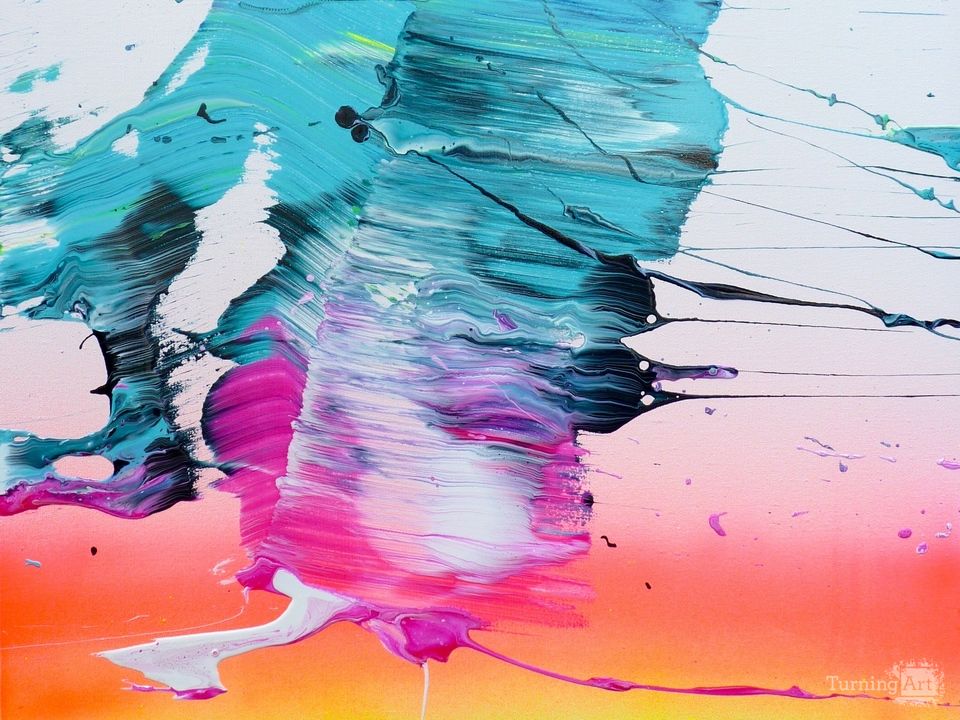
What is your advice for combating creative block?
What is creative block? I am not sure what that is. I go through periods where painting seems more difficult than other times. For instance, no move I make seems to produce anything worthwhile. No combination of colors speak to me. Nothing I do seems to make anything. I seem to stumble in my decision making. Maybe I have made the same move over and over, and now it seems stale. Facing these periods forces me to try something new, break open my process and take risks. Sometimes, I think certain paintings are failures at the time only to discover their merits later on. Those aren’t failures after all. But there are others that are just plain bad. During transition phases in my life, buying a house, and rebuilding a basement studio, I have found it to be the most difficult to feel inspired. However, I feel that the best way to move past those periods is just to keep working. Keep working no matter how bad, how stale, or how contrite the work is. Eventually, we move past those phases and the work records those transitions somehow. Often valuable lessons can be learned from those failures during awkward times.
As an artist, how do you measure your success?
This is tough. I try not to think about this too much, in terms of career evaluation. It can lead to a stifling state of mind. I don’t think about success in monetary terms or even in terms of metrics or goals. Being able to make my work for me is my measure of success. I don’t make my work to make a living, I do it from a purely artistic point of view. I always want to be able to maintain that integrity. I always want it to be a selfish endeavor. I make art primarily for myself and if other people get to see it that's an added benefit. 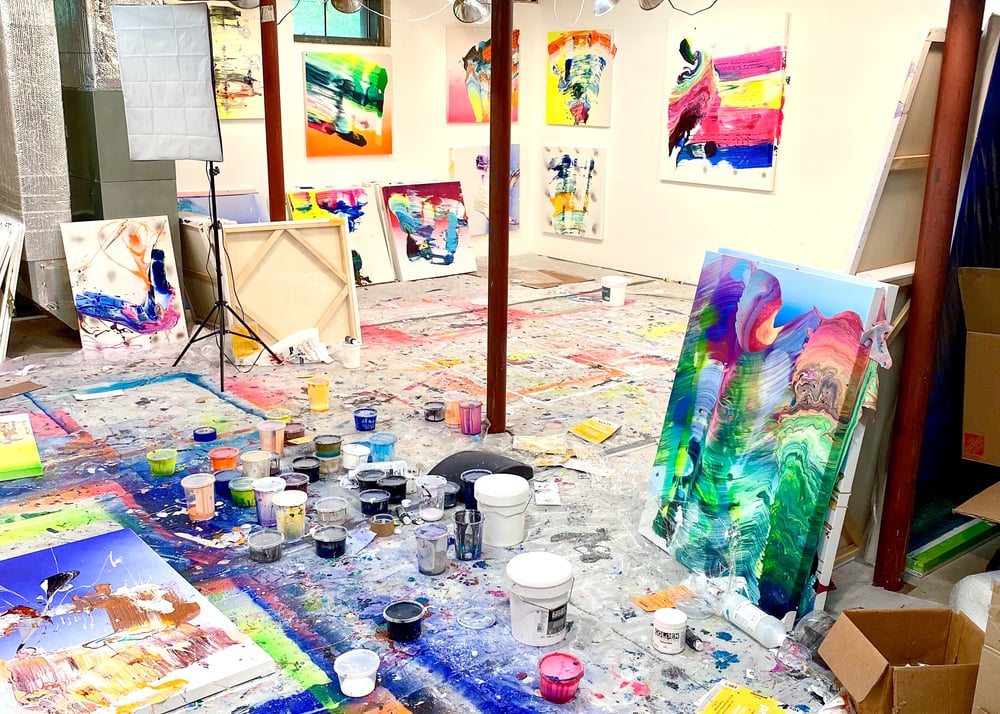 How do you see the art market changing? Where you do see yourself in this transition?
How do you see the art market changing? Where you do see yourself in this transition?
Artists now have to do more for themselves than ever to gain exposure. Artists are their own dealers and marketers. They are finding new creative ways to market and sell their work. They build a marketplace for themselves through social media and their website. Many artists are operating like a small business through these many outlets. The reliance on one or two galleries or dealers is a thing of the past.
I certainly could do more in terms of making money off of my work for myself. I rather like relying on others to do a lot of the marketing and selling for me. I want to be able to devote much of my energy to my creative process. But like I mentioned before, I never want to make art because I have to eat or pay the bills. I want my art to be for myself. Making money off of my work fuels me in a small way in that it reminds me that other people want to see it and own it.
What advice do you have for artists who are beginning to build their careers? Have there been any habits or strategies that you have adopted that you feel have created more opportunities or visibility for your work?
For artists just starting out, get your work out there. Don’t pass up opportunities to show your work because you are being picky or selective. Every opportunity leads to exposure. The purpose of art is to be seen, so you must take every opportunity to gain a new audience. Social media is a must. Instagram is a perfect platform for artists to share their art with a wide audience for free. You can and should interact with your followers. Post comments and use it have informal interactions with other arts all over the world. You may even get lucky and get likes from an artist you admire or your favorite art critic. A website with good SEO is also a must. It serves as a home base for any of your followers, to see a curated sample of your best work, learn news updates about you, and see what others have written and said about your work. Enter calls for art. Juried group shows are a great way to gain exposure and meet other artists and curators.
Your path will not be the same as anyone else's. You have to put it together for yourself. So whatever combination of outlets to get yourself out there might be right for someone else.
Do you consider yourself, and all artists, to be entrepreneurs?
Yes, all artists have to be entrepreneurs in this world to survive. Every artist has to find their own way somehow. Whether that is working several part-time jobs and working in a studio at night. Do whatever it takes in order to make it work. That is different for everyone. You have to cast a broad net in order to make being a professional artist a reality. The dogma of galleries or wealthy patrons being able to generate enough business for an artist is obsolete. That’s not to say galleries and physical spaces aren’t valuable because they are. Nothing replaces being able to get your physical work in front of people. Sell your work online through your own website and social media. Participate in calls for art. Being a professional artist is a hustle. Try to spend as much time promoting yourself as you do in the studio making. You are your best marketing and sales department until you become famous (if that’s what you want).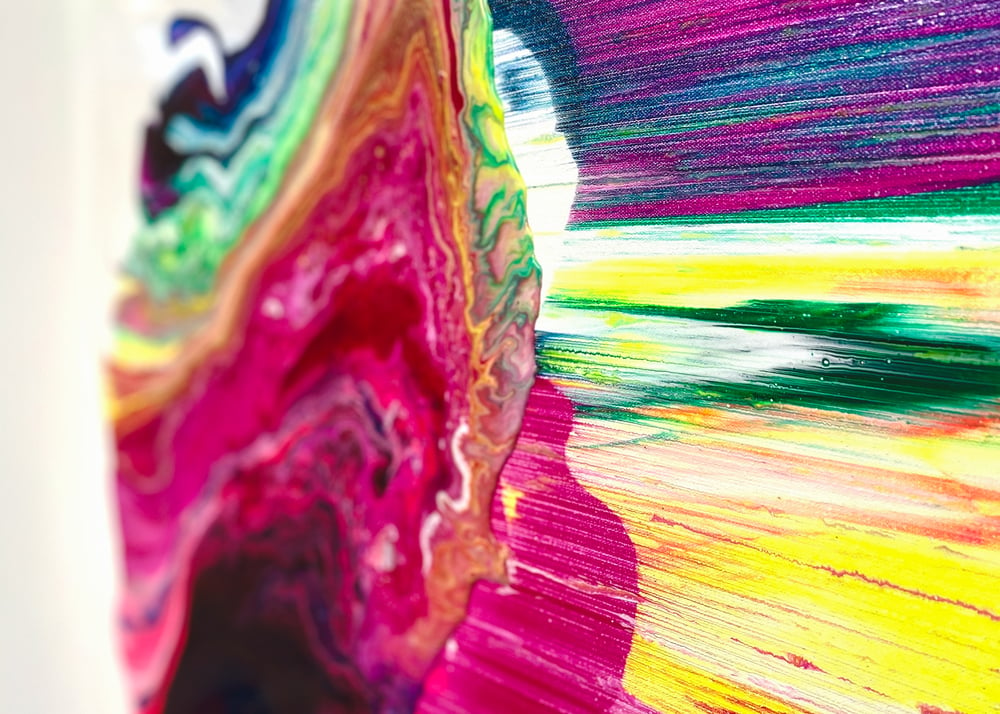 Failure is an inevitable part of success in any field. Do you have advice for overcoming setbacks?
Failure is an inevitable part of success in any field. Do you have advice for overcoming setbacks?
Just be tough. Expect failure and keep working. Try to learn from every failure. Every failure is an opportunity to not make the same mistake again. Use failure as a way to improve and keep moving forward. Embrace failure. A lot of younger people today are not encouraged to fail enough. Life is a mess and it never works out the way we expect, but you have to be able to see it for what it is in every moment. Appreciate the beauty in every moment, and accept the fact that we are not in control of a lot that happens to us through the journey of life.
What sparked your interest in partnering with TurningArt?
I joined TurningArt in 2012, when print companies and online marketplaces for art were still in their beginning phases. It was part of an initiative to get myself out there online as much as I could because I was just starting out as a professional artist. Off all the print companies (of which there are three) TurningArt definitely seems to value the success of the artist the most. TurningArt does more artist features online than any other. I was fortunate to be a part of an art event that TurningArt hosted in downtown Boston.
What does having your artwork in the workplace and other commercial or public spaces mean to you?
Having my art in a workplace or commercial space provides a wider range of people a unique opportunity to see my work that would not normally. People that don’t take the time to go to gallery shows or art fairs get the opportunity to view my work and even live with it in the workplace. They are allowed their own viewership to grow over time as they sit and work.
To see more featured TurningArtists, return to our blog. To get Adrian Negenborn's art in your space, set up a free consultation with an Art Advisor here!
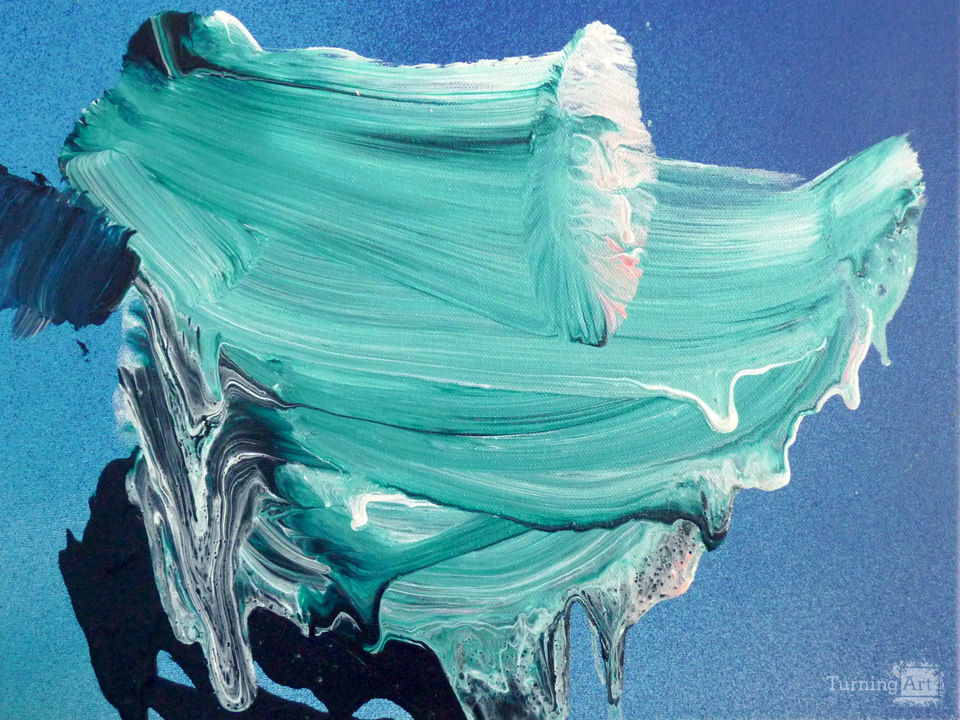
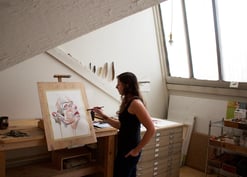



.jpg?width=332&height=177&name=%E6%A9%983-2%20(1).jpg)

